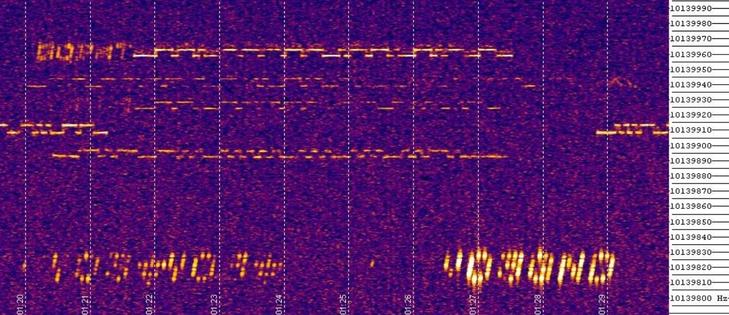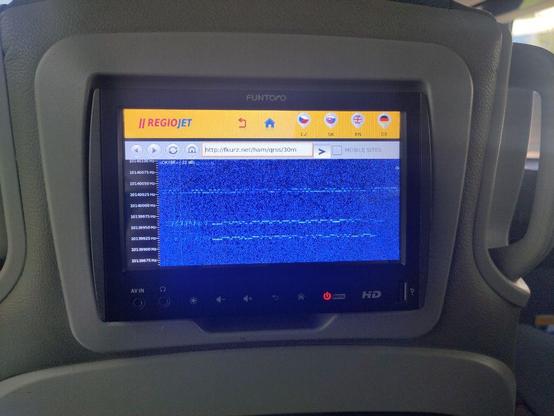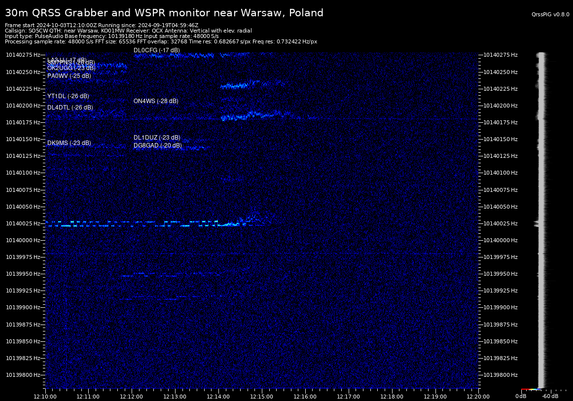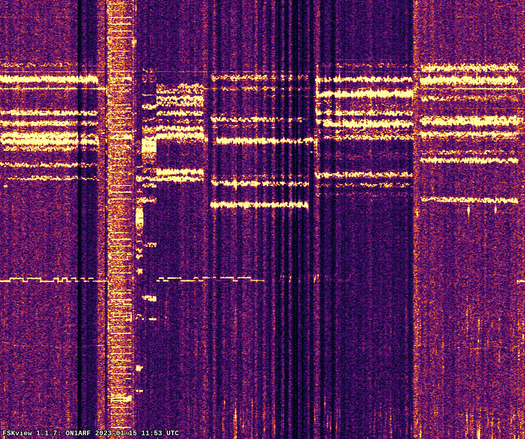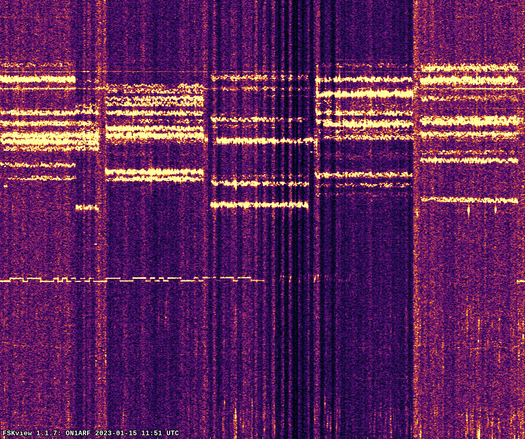I made some software rendering pixel fonts into audio and I TXed a #qrss signal. RXed my own signal from the grabbers, plus some common British beacons on 30m. Does this count as a threefer for the #hamchallenge? (44, 46 and 48).
#qrss
After trying to manually correlate propagation events I saw on my #QRSS / #WSPR grabber with the solar flux data from the #NOAA #SpaceWeather Prediction Center for a while, I wrote a few lines of Perl that simply plot the current data below the grabber output... https://fkurz.net/ham/qrss/30m-24h #hamradio #propagation
@warteschleife The QRSS modes often include drawing in the waterfall. This might appeal - https://mastodon.social/@DJ5CW@social.darc.de/113528748539539627
It's using a Raspberry Pi Pico - only a few dollars.
Finally got around to play with my Raspberry Pi Pico and the fantastic HF oscillator demo by R2BDY. I added some code to generate Chirped Hell and QRSS FSK-CW with it. A bit drifty without locking it to GPS. This will go on the air (30m) tomorrow! 🙂 https://github.com/RPiks/pico-hf-oscillator/pull/6 #hamradio #qrss #rp2040
My 30m #WSPR and #QRSS monitor at SO5CW now has a sliding 24h spectrum display. Each 10 minute frame is compressed to 10 pixels - if you click on it, you'll see it in full resolution. This produces a fascinating visual overview of the band conditions, and you nicely see when which stations fade in and out. I marked a few known QRSS signals on the screenshot. Check it out: https://fkurz.net/ham/qrss/30m-24h #hamradio
The SO5CW 30m #QRSS Grabber (https://fkurz.net/ham/qrss/) now also runs k9an-wsprd and reports #WSPR spots to WSPRnet. In order to make this happen I had to switch to PulseAudio instead of ALSA to allow two processes to record audio at once. A little Perl script using ImageMagick creates an overlay image of QrssPiG with the WSPR spots marked on the spectrum. I still need to make the CW filter of the QCX wider, though... #hamradio #qrp
Made a somewhat usable bandpass filter for the 30m band mostly using spare parts. It has about 10db of insertion loss (I should have wound the transformer windings atop one another instead of side-by-side). I seem to be able to compensate for that with my sdr's gain, at least. I've got it centred on the qrss area. #amateurradio #QRSS
Last test drive for the SO5CW #QRSS grabber - just need to drill one hole for the SO239 jack (and of course I don't have a 16mm drill at home). RPi4 + USB sound card dongle + 30m QCX. The box happened to have a RJ45 through-feed which I am using for the power supply (5V + 12V). The RPi4 connects to the net via WiFi. It will go in permanent service from KO01MW in July. #hamradio
Last night on my 30m QRSS grabber: EA1RJ (top), W1BW (W) and VE1VDM (VDM). WSPR certainly is technically more advanced than visual QRSS, but there's a lot of excitement involved in reviewing your overnight grabs and searching for DX 🙂 #hamradio #qrss #morsecode #qrp
Working on setting up a QRSS grabber with a QCX and a RaspberryPi. Very easy thanks to the excellent "QrssPiG" by HB9FXX: https://gitlab.com/hb9fxx/qrsspig #hamradio #qrss
10mW QRSS from the RaspberryPi making it nicely to the TF3HZ grabber in Iceland (lowest trace). #hamradio #qrss #morsecode #qrp
@g7vkq oh that's super neat, now I'm looking at a kit...https://www.qrp-labs.com/ultimate3/u3s.html #QRSS
